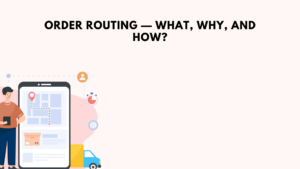Starting a clothing line is a dream for many fashion enthusiasts and entrepreneurs. The allure of seeing your designs worn by people around the world is undeniably exciting. However, transforming that dream into reality requires careful planning, creativity, and business acumen. In this blog, we’ll explore the essential steps to launch a successful clothing line, from conceptualization to market entry.
Step 1: Define Your Brand Identity
The first step in starting a clothing line is to define your brand identity. This involves understanding who you are as a designer and what you want your brand to represent. Consider the following questions:
- Who is your target audience?
- What is your brand’s mission and vision?
- What values and messages do you want to convey through your clothing?
- What sets your brand apart from others in the market?
Creating a strong brand identity will guide your design process, marketing strategy, and business decisions.
Step 2: Conduct Market Research
Before diving into design, it’s crucial to understand the market you’re entering. Conduct thorough market research to identify current trends, potential competitors, and gaps in the market. Analyze what similar brands are doing right and where they might be lacking. This information will help you position your clothing line effectively.
Step 3: Develop Your Designs
With a clear brand identity and market understanding, you can start developing your designs. This is where your creativity takes center stage. Sketch out your ideas, create prototypes, and choose fabrics and materials that align with your brand ethos. Consider the following tips:
- Focus on quality: Consumers value well-made, durable clothing.
- Be original: Unique designs will help you stand out in a crowded market.
- Stay true to your brand: Ensure that every piece reflects your brand’s identity and values.
Step 4: Create a Business Plan
A solid business plan is essential for turning your clothing line into a viable business. Your plan should outline your business goals, target market, marketing strategies, production plans, and financial projections. Key components of a business plan include:
- Executive Summary: A brief overview of your business.
- Market Analysis: Insights from your market research.
- Marketing and Sales Strategy: How you plan to promote and sell your clothing.
- Operations Plan: Details on production, sourcing, and logistics.
- Financial Plan: Budget, funding needs, and revenue projections.
Step 5: Source Materials and Manufacturers
Finding the right suppliers and manufacturers is critical to ensuring the quality and consistency of your clothing line. Look for reliable partners who can meet your standards and production needs. Consider factors such as:
- Cost: Ensure that the pricing fits within your budget.
- Quality: Visit factories and request samples to assess quality.
- Capacity: Make sure the manufacturer can scale production as your business grows.
- Ethics: Consider the ethical implications of your sourcing decisions, including labor practices and environmental impact.
Step 6: Build an Online Presence
In today’s digital age, a strong online presence is crucial for any new clothing line. Start by creating a professional website that showcases your brand and products. Invest in high-quality photography and compelling product descriptions. Additionally, leverage social media platforms to build a community around your brand. Engage with your audience through regular posts, stories, and collaborations with influencers.
Step 7: Launch and Market Your Clothing Line
When you’re ready to launch, plan a marketing campaign that generates buzz and attracts customers. Consider tactics such as:
- Launch Event: Host a virtual or in-person event to showcase your collection.
- Press Coverage: Reach out to fashion bloggers, magazines, and influencers for coverage.
- Social Media Ads: Use targeted ads to reach your ideal customers.
- Email Marketing: Build an email list and send out newsletters with updates and promotions.
Step 8: Monitor and Adapt
Once your clothing line is live, continuously monitor its performance. Track sales, customer feedback, and website analytics to understand what’s working and what needs improvement. Be ready to adapt your strategies based on this data. Innovation and flexibility are key to long-term success in the fashion industry.
Conclusion
Starting a clothing line is a challenging but rewarding journey. By defining a strong brand identity, conducting thorough market research, developing unique designs, and creating a solid business plan, you can lay the foundation for success. Remember, persistence and passion are crucial. Stay true to your vision, continuously adapt to the market, and watch your clothing line flourish. Embrace the fabric of success and turn your fashion dreams into reality.









